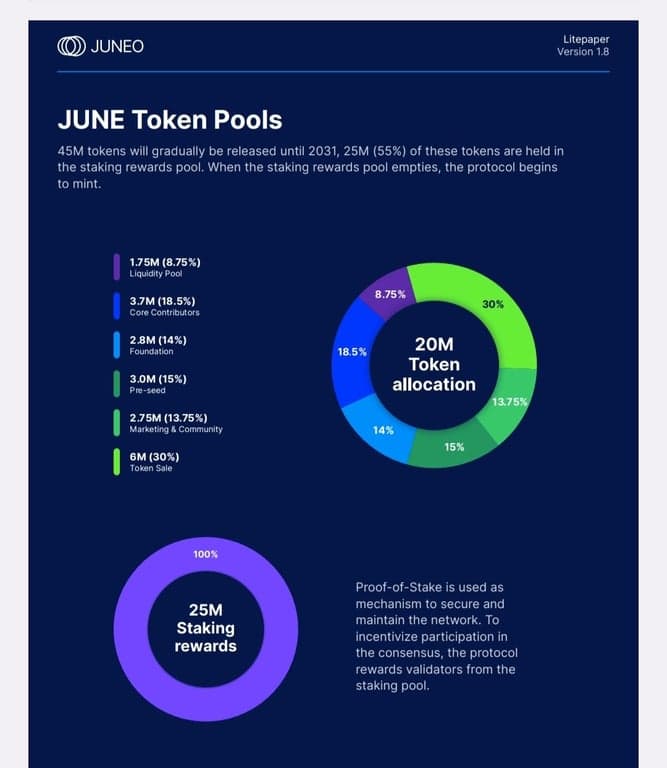
Lets dive in the differences between Juneo and Other networks. How does JUNEO fare against other networks?
Achieving a high Nakamoto Coefficient for validator node decentralisation since the launch.
1.The Nakamoto coefficient measures decentralisation. On a Proof-of-Stake network, the Nakamoto Coefficient is measured/defined by the number of node operators that together control more than a third (33.33%) of all staked tokens on the network.
The Nakamoto coefficient is 125++ at maturity for Juneo vs 29 on Avalanche and 82 on Pokadot.
2. TPS
Tx per second on Juneo is around 4.5K+ which is the same as Avalanche network but it is less than Matic that has a little of over 8k tx per second.
3. Staking requirement
50 tokens ($150) for Juneo vs 20,000 on Matic ($19,800) & 350 DOT($1.8K)
4. Validator staking rewards
Staking on Juneo has on the highest rewards rate with 22.5% while DOT is around 14% and Avalanche 8.21%.
There are many things to learn on the Juneo ecosystem so you can learn more via the litepaper: Litepaper_Public_Version_Long (vs 1.07) (juneo.com)


